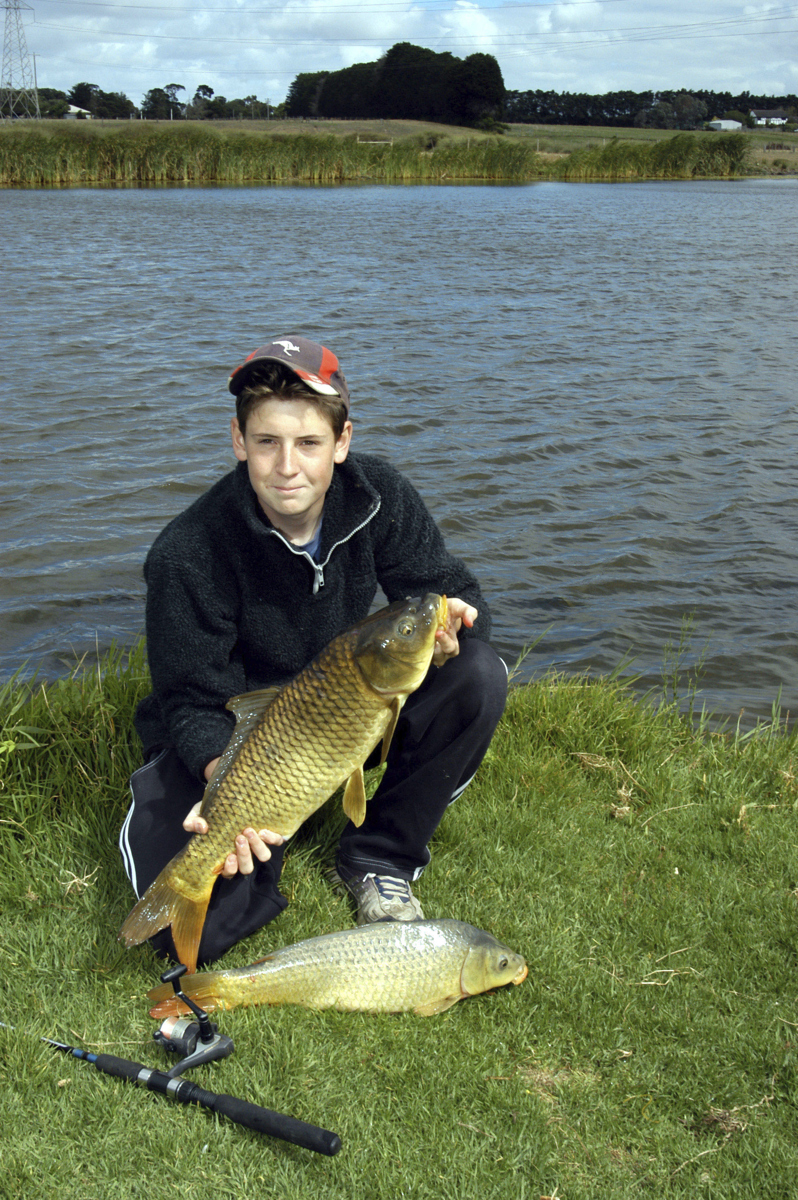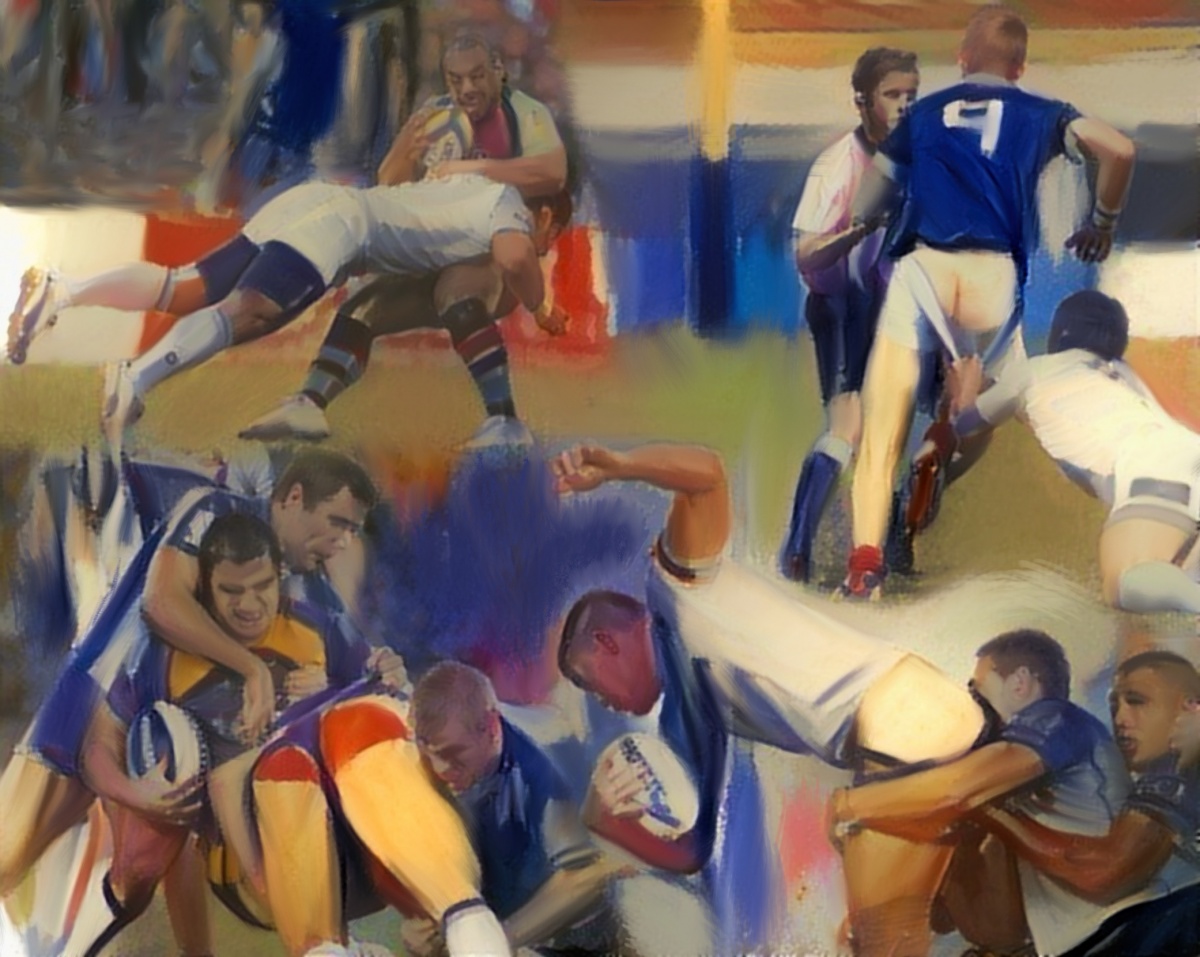STEVE COOPER reports on the campaign to cull carp in our waterways and warns that it might not come without pain:
PICTURE THE SCENE if you can: a 50-metre long grass verge on a low-lying river bank flanked at one end by a two-metre tall stand of cumbungi, at the other end by willow trees, their sagging string-like leaves trailing in the water. On the open ground between stands an angler, all 1.2 metres of him. The rod in his hands is bent almost in half, line is pouring off his reel and racing out through the guides.
There is a battle on in earnest. It is boy versus carp; neither party is willing to concede. The carp on the end of the line works its way upstream and then down. Several times the fish arcs inshore seeking sanctuary in the heavy reed cover extending about a metre out from the river bank. Other anglers stay by their rods watching the action, keeping an eye on their lines in case the fish decides to cross and cause a tangle.
For several minutes the battle continues until at last a bronze coloured hulk, its red tinged pectoral fins flared, appears on the surface about five metres from shore. There are a few gasps from onlookers. This fish is a heavyweight for this stretch of river – five, maybe even seven kilograms. The carp’s tactics change from runs to short dives. Each time it lunges for the refuge of the river bed the water displaced by its powerful tail causes small eddies to break on the surface.

Undeterred and refusing all offers of help, the young angler continues on steadfastly. Finally, the carp succumbs to the angler’s steady, unhurried pumping. Exhausted and on the surface, it glides in meekly towards the bank. Several anglers leave their rods to watch the coup de grace. Almost at the last moment though the hook pulls, instinctively I duck as the small sinker and No. 6 hook fly harmlessly overhead.
The young angler is unfazed. With the conviction of an old campaigner he says: “Better put some more corn on Dad and I’ll see if I can hook him again.”
Such was carp fishing with my youngest son, Michael. This was not an isolated or unique experience among father-son combinations in the Barwon River at Geelong. I know of several other alliances who have similar memories of, “big ones that got away”.
This is carp fishing. For many young anglers it is the modern equivalent of the legendary pole, catgut and safety pin of the days before your grandfather was born.

Carp fishing has come a long way since the 1960s. In those days the freshwater angling community was shocked by the explosion of carp numbers and their uncontrollable spread through southern waterways. As for fishing for them, that was unthinkable – the Queen Mother of piscatorial sins!
Attitudes have changed, the stigma once attached to carp fishing has diminished although there are still pockets of anglers who refuse to accept carp as anything other than a noxious pest. For many anglers it was simply a matter of making the best out of a situation beyond their control.
The most significant attitude change towards carp has come from the younger generation. Many of today’s adult anglers cut their teeth on carp and they have followed on by taking up coarse fishing where, on light tackle and in weedy conditions, these fish prove formidable opponents.
Such is the change that in my area for example, even when trout and redfin are on the go, you are likely to see more anglers fishing with a piece of corn or cheese on their hooks than a worm or mudeye.

Locals jokingly refer to carp as “Barwon Barra”; I prefer the analogy: training wheels with scales. The point being that even anglers who probably wouldn’t fish for carp have come to realise their value as a training aid. Some of us have even found that we actually like fishing for them because . . . well, because they are fun to catch.
Don’t be surprised if, in future years, carp fishing establishes a following and position not unlike the European scene. In many of these countries these fish are regarded as a limited resource, too precious to catch just the once.
Catch-and-release has reached a point in England that individual fish are named. In a report I read in the UK “Anglers Mail” there was a picture of an angler holding the country’s largest known carp: “Mary, the monster Wraysbury mirror”.
It is illegal to return carp to waters in Australia. This makes it hard for parents who, having taken on the task of encouraging their children to return fish, then have the problem of explaining why carp must be humanely killed and not returned. Despite the logic and rationale behind this law some adults have a problem with killing fish like this.

The reason for writing the above comes down to a media release put out by Fisheries Victoria, which states:
Recreational anglers, nature lovers, farmers and waterway users are invited to 13 community meetings in Victoria this month and next to hear about plans to reduce carp numbers and the development of the National Carp Control Plan.
State Director National Carp Control Plan, Craig Ingram, said carp were an unwanted pest in our lakes and rivers that reduce water quality, adversely impact our native aquatic ecosystems and cost the economy up to $500 million per annum.
“In 2016, the Commonwealth Government announced $15 million over 2.5 years to develop the Plan that will include exploring the release of a naturally occurring, species-specific carp herpes virus as a biological control agent,” Mr Ingram said.
“Common carp were introduced to Victoria in 1859 and are now the dominant species in many waterways, having a major impact on the health of our waterways and our native fish populations.”
The team developing the plan is now embarking on a large program of scientific research and public meetings across carp affected areas to:
Address knowledge gaps, and better understand and manage risks to support the potential release of the carp virus, subsequent clean-up and recovery of native fish and ecosystems;
- plan for an integrated approach to control carp in Australia’s waterways;
- build community awareness for the proposal to release the virus and address community concerns;
- develop strategies for release of the virus and subsequent clean-up; and
- support national coordination on all elements of the Plan’s development.
At the end of 2018 a formal recommendation on the best way to control carp impacts in Australia will be made in a document called “The National Carp Control Plan.”
The 13 public meetings in Victoria will run from 6pm to 8pm and commence on October 16 in Horsham, followed by Hamilton, Colac, Mildura, Swan Hill, Shepparton, Bendigo, Wangaratta, Wodonga, Echuca, Sale, Lakes Entrance and in Melbourne at Albert Park.
For more information: visit www.vfa.vic.gov.au/carpplan or www.carp.gov.au
Of course, not everyone will be happy with the removal of carp. Some southern rivers are almost devoid of piscatorial adventure without carp.

My information is that the virus kills carp within a week of them coming in contact with it. Consider the worst-case scenario: thousands of tonnes of smelly, rotting, carp carcases lining waterways. I wonder who will be cleaning up the mess?
STEVE COOPER won two Walkley Awards for investigative journalism but his great love is fishing and he is renowned as one of Australia’s foremost writers and broadcasters on the subject.



Discussion about this post